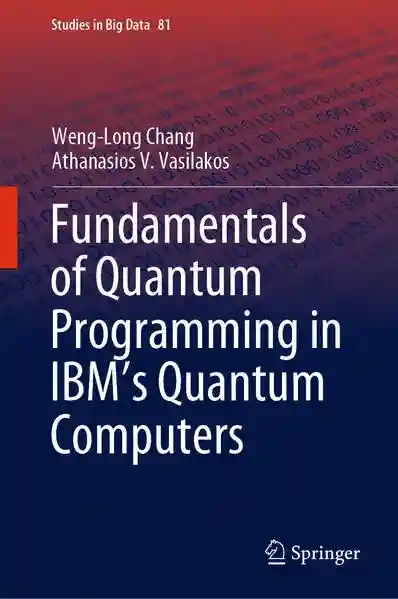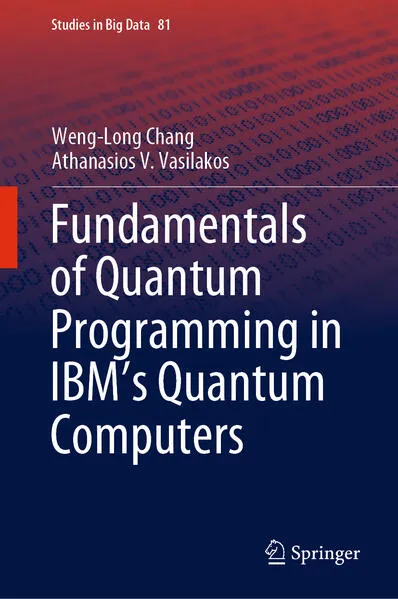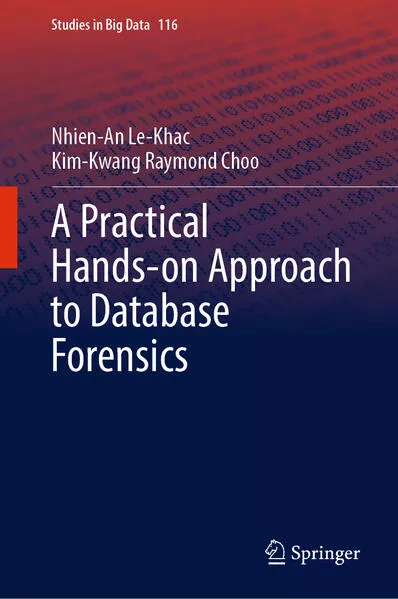Chronologie aller Bände (1 - 3)

Die Reihenfolge beginnt mit dem Buch "Fundamentals of Quantum Programming in IBM's Quantum Computers". Wer alle Bücher der Reihe nach lesen möchte, sollte mit diesem Band von Weng-Long Chang beginnen. Der zweite Teil der Reihe "Fundamentals of Quantum Programming in IBM's Quantum Computers" ist am 21.12.2020 erschienen. Mit insgesamt 3 Bänden wurde die Reihe über einen Zeitraum von ungefähr 5 Jahren fortgesetzt. Der neueste Band trägt den Titel "Cyber Security".
- Anzahl der Bewertungen für die gesamte Reihe: 2
- Ø Bewertung der Reihe: 5
- Start der Reihe: 21.12.2020
- Neueste Folge: 23.12.2025
Diese Reihenfolge enthält 3 unterschiedliche Autoren.
- Autor: Chang, Weng-Long
- Anzahl Bewertungen: 1
- Ø Bewertung: 5.0
- Medium: Buch
- Veröffentlicht: 22.12.2020
- Genre: Sonstiges
Fundamentals of Quantum Programming in IBM's Quantum Computers
This textbook introduces major topics that include quantum bits, superposition, entanglement, logic gates, quantum search algorithm, quantum Fourier transform, inverse quantum Fourier transform, Shor’s order-finding algorithm and phase estimation. Everyone can write algorithms and programs in the cloud making using IBM’s quantum computers that support IBM Q Experience which contains the composer, open quantum assembly language, simulators and real quantum devices. Furthermore, this book teaches you how to use open quantum assembly language to write quantum programs for dealing with complex problems. Through numerous examples and exercises, readers will learn how to write a quantum program with open quantum assembly language for solving any problem from start to complete.
This book includes six main chapters:
·Quantum Bits and Quantum Gates—learn what quantum bits are, how to declare and measure them, what quantum gates are and how they work on a simulator or a real device in the cloud.
·Boolean Algebra and its Applications—learn how to decompose CCNOT gate into six CNOT gates and nine gates of one bit and how to use NOT gates, CNOT gates and CCNOT gates to implement logic operations including NOT, OR, AND, NOR, NAND, Exclusive-OR (XOR) and Exclusive-NOR (XNOR). ·Quantum Search Algorithm and its Applications—learn core concepts of quantum search algorithm and how to write quantum programs to implement core concepts of quantum search algorithm for solving two famous NP-complete problems that are the satisfiability problem in n Boolean variables and m clauses and the clique problem in a graph with n vertices and q edges. ·Quantum Fourier Transform and its Applications—learn core concepts of quantum Fourier transform and inverse quantum Fourier transform and how to write quantum programs to implement them for solving two real applications that are to compute the period and the frequency of two given oracular functions.·Order-Finding and Factoring—learn core concepts of Shor’s order-finding algorithm and how to write quantum programs to implement Shor’s order-finding algorithm for completing the prime factorization to 15.
Phase Estimation and its Applications—learn core concepts of phase estimation and quantum counting and how to write quantum programs to implement them to compute the number of solution(s) in the independent set problem in a graph with two vertices and one edge.
- Autor: Lehto, Martti
- Anzahl Bewertungen: 0
- Ø Bewertung:
- Medium: Buch
- Veröffentlicht: 23.12.2025
- Genre: Sonstiges
Cyber Security
This book offers a multifaceted exploration of cybersecurity through the lenses of policy, ethics, and advanced technology. It examines the complex interplay of law, diplomacy, and geopolitics in the digital age, emphasizing the protection of critical infrastructure and the impact of international conflict on global security. Topics include cybersecurity education, virus evasion, quantum-safe AI systems, and the challenges posed by IoT, OT, and Cyber-Physical Systems. The book also highlights the role of NLP technologies and situational awareness, concluding with a focused analysis of cybersecurity in aviation. It presents cutting-edge research to inspire innovation across the global cyber landscape.
- Band: 116
- Autor: Le-Khac, Nhien-An
- Anzahl Bewertungen: 0
- Ø Bewertung:
- Medium: Buch
- Veröffentlicht: 23.10.2022
- Genre: Krimi
A Practical Hands-on Approach to Database Forensics
Adopting an experimental learning approach, this book describes a practical forensic process to acquire and analyze databases from a given device and/or application. Databases hold important, sensitive, and/or confidential information and are a crucial source of evidence in any digital investigation. This also reinforces the importance of keeping up to date on the cyber-threat landscape as well as any associated database forensic challenges and approaches. The book also guides cyber-forensic researchers, educators, and practitioners through the process of conducting database forensics and investigations on mobile devices, Internet of Things (IoT) devices, web browsers, and end-to-end encrypted instant messaging applications. Given the fast-changing database forensics landscape, this book will be of interest to researchers, educators, and practitioners in the field, as well as students who want to learn about the database investigation.


